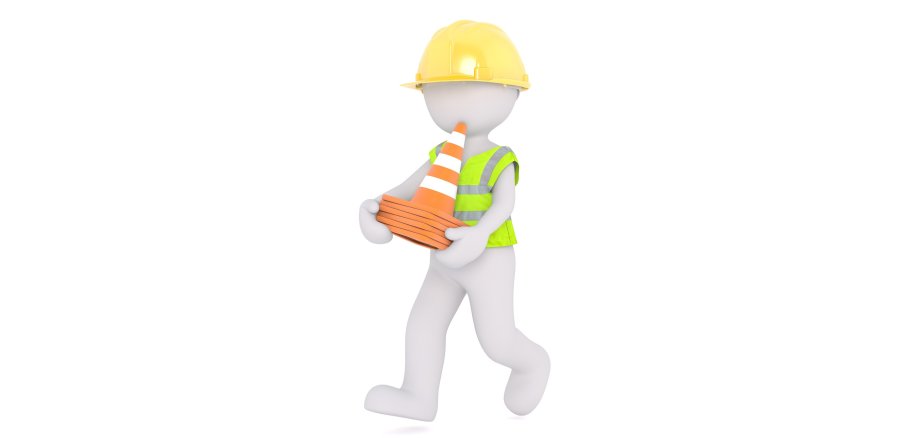B51 between Trier & Konz: Road rehabilitation begins
The LBM informs:
On September 14, 2022, around 7 a.m., work to rehabilitate the road between Trier-Feyen and Konz along the B 51 will begin. The actual closure will be activated at 5 a.m.
The preparatory work for traffic safety was already started in week 36 (without affecting traffic).
When the work begins, the protective barriers for the required crossings will be dismantled and, at the same time, the asphalt layers in this section will be milled off and removed.
Furthermore, an approx. 50 m long drainage channel will be relocated in the crossing in the central island on the Konz side. On the following day, preliminary investigations for the consolidation and explosive ordnance probing are carried out before the new frost protection subgrade can be created. Starting September 16th and also on the following weekend, the asphalt layers will be laid, joints will be cut and poured and the marking will be applied.
In order to optimize the construction process, construction phases 2 and 4 were partially combined and construction phase 4 was placed before construction phase 3.
In the first construction phase, it is planned to renovate the two-lane area in front of the Karthaus railway bridge (coming from Trier) over a length of around 270 m.
This must be done with the B 51 being completely closed, which is expected to last around six working days.
The diversions were optimized again in order to keep the impact on all traffic participants as low as possible despite the construction work.
Road users coming from Trier in the direction of Luxembourg/Wasserliesch/Saarburg are diverted via the K134 through Konz to the intersection of Schillerstraße and Granastraße and from there via the Luxemburger Damm to the Möbel Martin Kreisel back to the B51 or B419.
Coming from Luxembourg/Wasserliesch, road users are guided from the Martin roundabout along the banks of the Moselle/Saar to the roundabout on Grana-/Saarstraße (donut roundabout) and from there through Konz via the K134 to Trier.
The diversion was originally supposed to take place via the Saarbrücke and the L 138, Konzerbrück, Wasserliesch to the B 419. In coordination with the city of Konz, traffic can now be routed via the city street to the Möbel Martin roundabout, which means that the detour route is significantly shorter.
From September 19, 2022, the preparatory work for the conversion of the traffic routing for the 2nd and 4th construction phase will run parallel to the remaining work of the first construction phase, which will be carried out in parallel.
In the second phase of construction, the B 51 will be connected to the K 134. This means that in this construction phase the two connecting ramps from the B 51 to the K 134 and vice versa will be built. This work is also being carried out while the K 134 is completely closed. Traffic will then be routed via the B 51 to the Möbel Martin roundabout in Konz and vice versa. Approximately two to three weeks of construction time are required for the renovation of the two connecting ramps.
At the same time, the carriageway from Konz to Trier will be closed in the four-lane area of the B 51 (4th construction phase) so that construction work can begin here as well. This section, which is divided again at the entrance to the Löllberg so that it can always be maintained, must also be built under full closure. Here traffic is routed via the Konz lane in oncoming traffic.
The last construction phase provides for the renovation of the carriageway from Trier to Konz. Here, oncoming traffic is routed via the carriageway from Konz to Trier.
The refurbishment of the third and fourth construction phase each takes around five to six weeks of work.
The Hotel Estricher Hof and the Löllberg residential area can be reached via the existing driveway throughout the entire construction period. However, in order to ensure the flow of traffic, turning left from the direction of Trier in the direction of Löllberg is prohibited. Corresponding information boards are set up here, which direct local traffic to the Löllberg or the Hotel Estricher Hof to the roundabout Möbel Martin and then in the opposite direction to the Löllberg (when turning right).
Information on traffic routing around the construction project can also be found in the mobility atlas www.verkehr.rlp.de be taken (see link).
The federal highway, which is loaded with around 28,000 vehicles/24h, is one of the busiest roads in the Trier area. The existing road surface cannot withstand this traffic load, which inevitably leads to cracks and dents in the road, which make rehabilitation necessary. During the regular condition survey and assessment (ZEB) in Rhineland-Palatinate, this section of the route was classified as in need of rehabilitation.
In detail, it is planned to completely remove the existing asphalt structure and to re-profil the frost protection. This is then solidified with cement. Subsequent to this work, the new asphalt layers will be installed again in sufficient layers. In addition, the existing drainage facilities will be repaired. The existing mastic asphalt gutters will be renewed.
The construction route has a special feature: The Federal Ministry of Transport and Digital Affairs has asked the state mobility agency to build test routes with rolled asphalt at a lower temperature, which should serve to collect experience. According to the current status, a new workplace limit value for vapors and aerosols from bitumen is to be introduced from 2025, which will make the use of temperature-reduced asphalt absolutely necessary. The federal government specifies a certain requirement profile for the test stretches and a nationwide, systematic approach so that the knowledge gained from this can also be compared.
In such a test track, tracks with conventionally manufactured asphalt and with temperature-reduced asphalt are built according to a precisely specified pattern in order to create a comparability of these tracks.
So far, the workplace limit just mentioned is 15mg/m3. From 2025, this should then be reduced to 1.5 mg/m3. These pollutant reductions can only be achieved by lowering the mixing and paving temperatures of the asphalt pavement by at least 20 degrees Celsius.
The aim is to change the viscosity, i.e. the flowability of the asphalt mix, in such a way that it also allows installation at lower production temperatures. This happens through certain additives in the bitumen, which can be organic, mineral or chemical and have different modes of action.
It is very important for the federal government to compile a collection of experiences in order to be able to approve products that have already proven their worth without major evidence.
However, the future workplace limit value to be achieved cannot be achieved simply by lowering the installation temperature. In addition to this, it is necessary to equip the asphalt pavers with an extraction system so that the noxious vapors do not reach the construction site personnel in the first place.
The costs of this measure amount to around 2.3 million euros at the expense of the Federal Republic of Germany.
In Konz, the traffic light system will also be renewed after the Estricher Hof renovation work has been completed.
The LBM Trier asks all road users for patience and understanding for the unavoidable impairments during the construction period.

